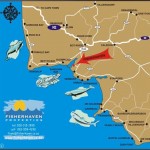Kleinmond Vlei Horses and Horses of the Anglo Boer War
- Jul
- 08

F J van der Merwe, D.Sc Agric. P.O. Box 664, Kleinmond 7195
Page 1: Introduction
Page 2: Where do the horses fit in and what future do they have?
Page 3: The future of the horses depends on many factors.
Page 4: Before the war started.
Most of us are aware of and some of the readers may even be participants in the world wide pastime of bird watching – I am referring to birds of the feathered kind, of course! It is a fascinating, low-cost pursuit enjoyed by people of all ages and all walks of life. It brings people close to Nature and gives them a never ending sense of and sensibility for our colourful environment.
Few of us, if any, have ever heard of horse watching. It is not a regular or recognized pastime. Be that as it may, I can assure you that my family and I have, over the past 30 years, enjoyed the most wonderful combination of bird watching and horse watching in the wetland stretching from Botriver lagoon down to Kleinmond. There are 120-odd bird species in the vlei and its surroundings. As a family we became aware of the small group of wild horses in the vlei in 1970 when our eldest son, who was 12 at the time and already a seasoned bird watcher and amateur ornitholigist, took us along on his wanderings in pursuit of his birds.
Over a period of thirty years we periodically observed the small group of free roaming horses year after year during our December holidays and saw them slowly increase in numbers. Interestingly enough in those years the majority of foals born were males, which tended to keep down the rate of population increase. In the present group of 19 there are 11 males and 8 females. Of course when these males came to maturity there are fierce fights for supremacy which carries with it the honour and privilege, once a year, of mating with the few available females. As can be expected in such a small group, a high degree of inbreeding took place. However, despite the severe narrowing of the genetic basis, the young stock remains remarkably sound.
The foal in the photograph, born in February 2006 is, yes you have guessed correctly, another male.
Recent Posts
- The Pros And Cons Of Solar Power
- 3 Things Private Sellers Wish they Knew (That Estate Agents Do!)
- Top 5 Tips For Sellers in a Buyers’ Market
- Top 5 Tips For Buyers In A Buyers’ Market
- Your Property Title Deed – A Short History
Contact Us
Fisherhaven Properties
Frans Theunissen
Tel: 082 559 4290
Tel: 028 315 1990
Fax: 086 660 4823
info@fisherhaven.co.za

Please ask us about long-term property rentals in the area.


